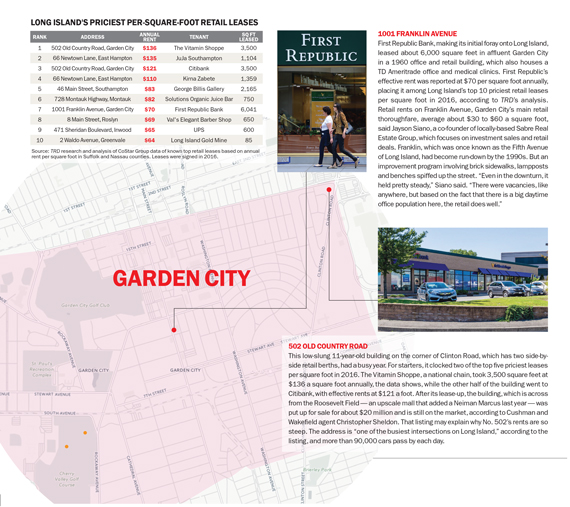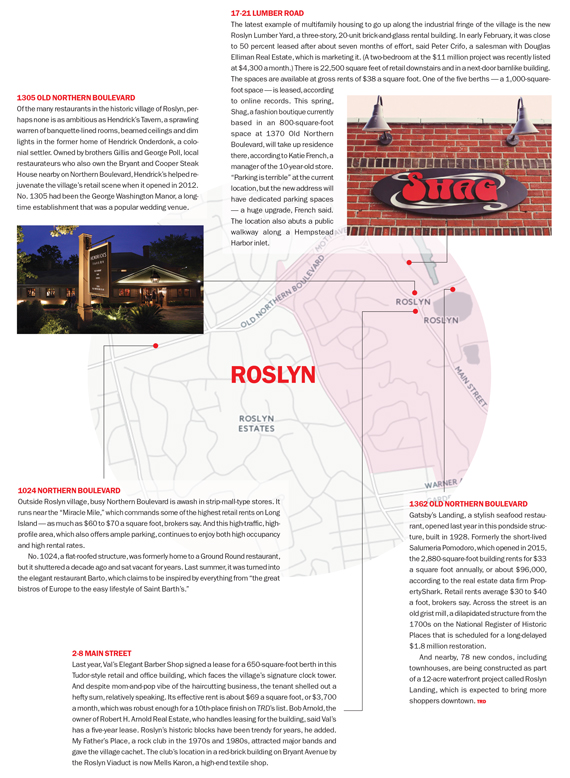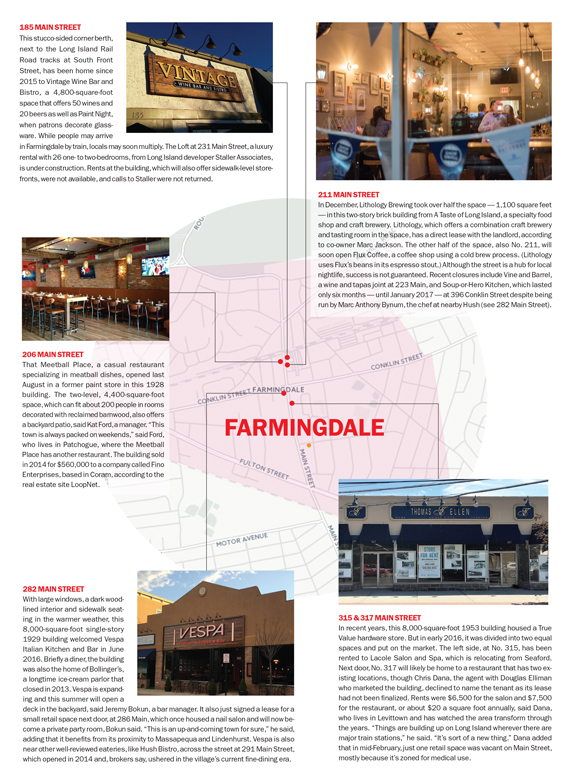Trending
Setting up shop in the suburbs
Strip malls command the highest rents, but bars and restaurants bring new life to downtowns
Long Island shoppers may be bucking a national trend. In the rest of the country, online retailers are undercutting their offline counterparts, forcing established department stores to close their doors. But although not quite immune, retail in Nassau and Suffolk counties hasn’t seen as many chains having to shutter locations. In fact, rents and leasing activity have edged up in the last few years.
Once-empty downtowns have reinvented themselves by encouraging restaurant rows, like in Farmingdale’s village, a trend that in many ways was hatched in the South Shore community of Patchogue — whose retail district now crackles with nightlife amid new apartments.
Similarly, the massive development projects that are underway in places like Glen Cove, Hempstead Village and Wyandanch aim to create dense, walkable neighborhoods with more brick-and-mortar stores.
The average annual retail rent across Long Island at the end of 2016 was about $26 a square foot, according to CoStar Group, up from about $24 a foot at the end of 2014. Leasing activity on Long Island, meanwhile, totaled about 604,000 square feet, CoStar reported, versus about 450,000 at the end of 2014.
To be fair, Long Islanders still spend lots of time in cars, and high-traffic streets lined with strip malls still command among the steepest rents, according to an analysis by The Real Deal.
And weak spots exist: Storefronts in strong submarkets, like the Village of Roslyn, have been slow to lease up. And brokers say that while some categories, like furniture, are struggling, others, like medical clinics, are picking up the slack.
Below, TRD looks at what has changed — and what probably doesn’t need to — in three major retail hubs.







